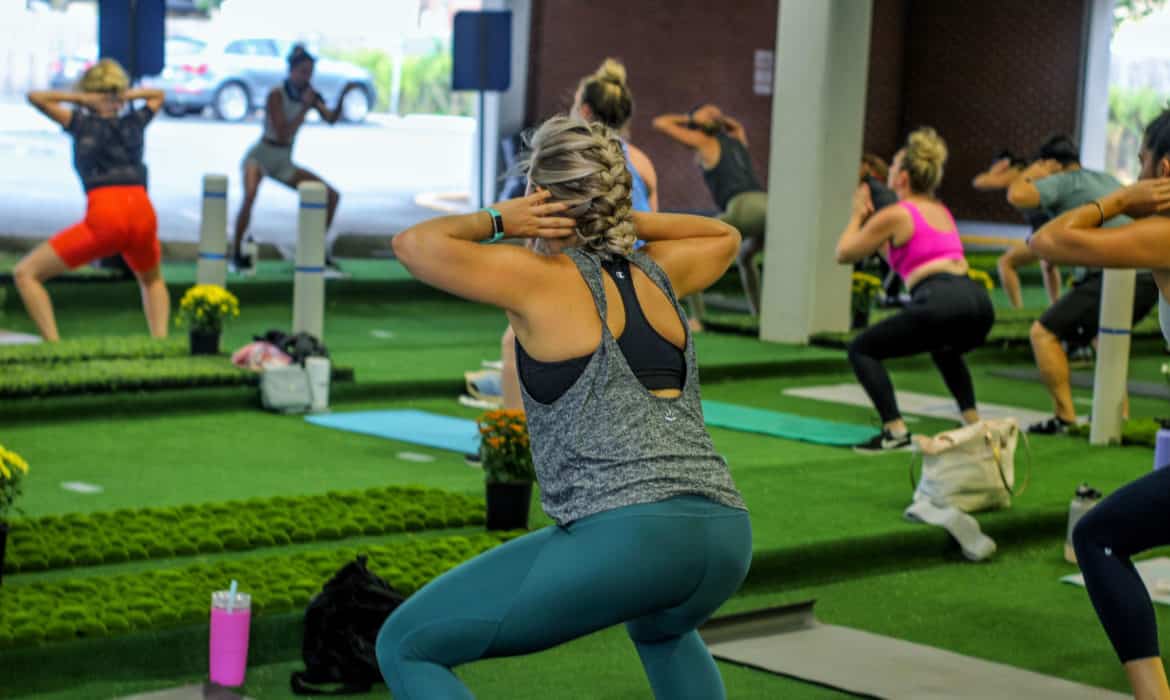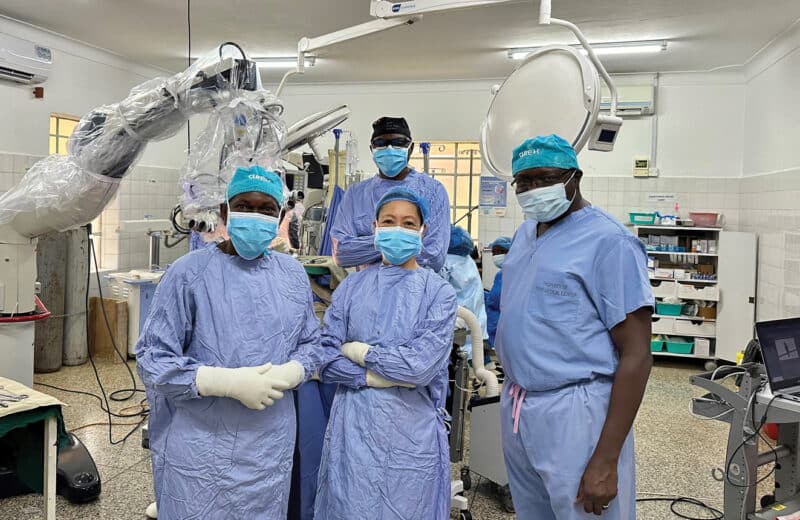Fitness instructor Courtney Aronson couldn’t believe her eyes.
On a chilly day on the cusp of winter, Aronson watched as 24 of her students gathered at Studio Three’s outdoor exercise facility in Lincoln Park for a full-body workout class. Bundled up in outdoor gear, her students took their socially distant place on the turf and got ready to combat their pandemic-infused stress.
“I can’t tell you how inspiring it was to see,” Aronson says. “There they were, dressed head to toe in gloves, hats, and coats. They were there not only because they wanted to work out, but they wanted to be with other people while they did it. As a teacher, it’s just so exciting to see.”
Indeed, when the world as we knew it shut down during the pandemic, many exercise enthusiasts found themselves sitting in their living room with their gym shoes tied … and nowhere to go.
But that didn’t last long.
Chicago-area fitness facilities are finding more ways than ever for people to connect with each other. These offerings enable people to work out socially during the pandemic, whether remotely or safely distanced in person, maintaining their physical and mental health.
Connecting through movement
“Our members needed us, but more importantly, our members needed each other,” says Francie Habash, fitness director at the Galter LifeCenter, a medical fitness center that’s part of Swedish Hospital and offers 40 online classes a week. “We are their community. And for your health, you just have to keep moving. Mentally, this isolation is just killing people.”
It’s a harsh realization, but isolation has its physical as well as psychological hazards. According to a 2020 report from the National Academies of Sciences, Engineering, and Medicine (NASEM), more than one-third of adults age 45 and older feel lonely, and nearly one-fourth of adults age 65 and older consider themselves socially isolated. Even more troubling, according to the CDC, loneliness and isolation can significantly increase a person’s risk for dementia, heart disease, stroke, and even premature death. So, moving alongside others who motivate you? Well, it’s never been more important.
“We are meant to be around other people,” Aronson says. “That’s what I love about group fitness. You can be with other likeminded individuals who want to better themselves and their health and build good energy together.”
Many Chicagoland fitness centers found a way, somewhat overnight, to pivot their programming to include ways in which people could still exercise alongside one another, whether in a virtual class or socially distant in person.
“I can’t tell you how many participants have told us that getting together to exercise is the highlight of their day,” Habash says. “We’ve even seen some people get emotional about it. The ability to connect with other folks, even from their little Zoom box, is so important.”
Granted, many had their doubts at first.
“We just didn’t know how this was all going to work,” Habash says. She and colleagues worried that group exercise wouldn’t translate over a screen. “We thought it might be really weird, but it wasn’t! And that was so freeing, especially for the instructors who were able to do their craft again. Everyone agreed that it was just what everyone needed.”
The home gym
While the pandemic offers some the opportunity to focus on their fitness at home, doing so often comes with challenges, some of which are downright comical. Take for example the experience of Downers Grove Park District Recreation Center instructor Carrie Anslow, who has been leading virtual exercise classes daily since the pandemic began back in March. During one particular class, there was a student whose young child was often visible on screen, trying to emulate the exercises that her mom was doing, from stretches to squats to push-ups.
“We have watched that baby grow. She will be 2 years old soon,” Anslow says. “That would have never happened if we stayed in the gym. It fills my heart with joy to see all these people in their homes, with the kids, and the pets. We were friends before, but now it feels like a family.”
Granted, transitioning from a gym filled with equipment to a small home basement or bedroom has required many fitness enthusiasts to become resourceful. Anslow at first had to work through connection issues and add Wi-Fi extenders within her home. She also tested various platforms to see which worked best for her classes, which typically include five to 13 people.
And then there’s the equipment people source from around the house. “The things I have seen people using as weights during my class has been nothing short of hilarious,” Aronson says. “I’ve seen people holding dogs and newborns. I’ve seen people use laundry detergent and wine bottles as weights. I’ve even seen one person even use a big pot of vegetables for added resistance. People are so creative when they need to be. Whether they had a full rack of dumbbells or absolutely nothing in their home, they made it work.”
While restrictions continue to change, the arrival of a vaccine points to a day where we might gather together to exercise once again. However, for some, it will take time to feel comfortable getting back in the gym.
And that’s okay.
“There is a wide spectrum of where people are in terms of their comfort level,” Habash says.
But no matter how one decides to keep up their exercise regimen, there is one thing for certain: We need each other now more than ever before.
“For some people, an exercise class is the only time they are around people,” Aronson says. “The mental health release that exercise gives is so critical. And whether being motivated by the person next to you on a Zoom screen or by a person 6 feet away, the important thing is that you show up. People are inspiring one another, and it’s an emotional thing to watch.”













